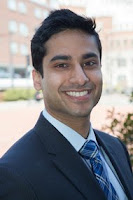Color photgraph of Retina Following Stem Cell Transplant
Last year, a 77-year-old woman traveled to a clinic in Georgia to have stem cells injected in her eyes. She came in hope of a cure—or at least something that could help her macular degeneration, which causes a dark spot to appear in the center of vision.
The procedure was supposed to work like this: The clinic would take fat from her belly, separate out stem cells that naturally occur in fat, and inject them into her eyes to regenerate damaged tissue. The procedure cost $8,900. It had not been approved by the Food and Drug Administration and was not covered by insurance. To pay out of pocket, she had to raise money on a crowdfunding site.
Her vision did not get better. It got much worse. Within three months, her retinas—the eye’s layer of light-sensitive cells—had peeled away from the rest of her eyes. As a result, she can only make out hand motions in her right eye and light in the left, according to a recent case report. She could no longer walk on her own.
In March, eye doctors based primarily at the Bascom Palmer Eye Institute in Miami had published a widely covered report describing three eerily similar cases: Three elderly women with macular degeneration got stem cells derived from their own fat injected into their eyes at a different stem-cell clinic in Florida. The same thing happened: Their retinas became detached, and they went blind. The doctors ended up examining the 77-year-old woman too, which led to the recent case report describing her condition.
And there are likely even more cases. Since writing the first report, says Ajay Kuriyan, an author on the report and now a retinal specialist at the University of Rochester, eye doctors around the country have come forward with similar stories of stem-cell injections gone awry. They are now preparing an article describing the additional cases.
“It’s just not a professional thing to take an unproven intervention and inject it in both eyes.”
1. No competent ophthalmologist treats both eyes simultaneously, even with approved treatments.
2. All credible treatments have been studied with a verifiable, repeatable study approved by the FDA.
Always ask the treating physician for scientific peer reviewed articles.
Always ask for a written consent form. It should list all possible side effects and complications. This is an accepted standard of care. Absent this document the provider is guilty of malpractice, and it would be indefensible in court.
Always ask your physician for a referral to a local ophthalmologist, (BOARD CERTIFIED) for his opinion.
The FDA has drafted guidelines on how to oversee stem-cell clinics. The agency says stem cells do not have to be regulated as drugs as long as clinics follow certain standards, like if they only minimally manipulate the cells and don’t change their purpose in the body. For example, transferring fat from the belly to breasts would not fall under FDA purview because the fat is still acting as fat. But if stem cells are being separated from fat and then injected to treat a disease, then the FDA may have reason to step in.
Remember if it sounds too good to be true, it probably is not.
New York Times Article
The National Eye Institute and the National Institute for Health fund many of these studies.
Clinical Trials lists all current research and the phase of study.
1. Clinical Study of Subretinal Transplantation of Human Embryo Stem Cell Derived Retinal Pigment Epitheliums in Treatment of Macular Degeneration Diseases
2. Treatment of Dry Age Related Macular Degeneration Disease With Retinal Pigment Epithelium Derived From Human Embryonic Stem Cells
3. Study of Subretinal Implantation of Human Embryonic Stem Cell-Derived RPE Cells in Advanced Dry AMD
Stem cell treatments are successful for specific disease. It is not a generic or 'miracle' panacea.
Gary M. Levin is a Board Certified Ophthalmologist. He blogs regularly on topics related to health issues, diseases and health reform. Comments are welcome.













